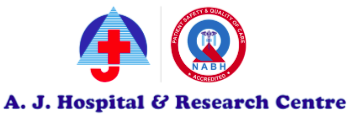
Sleep Apnea: Types, Diagnosis & Treatment
Do you often find yourself feeling tired or snore loudly even after a full goodnight’s sleep? It could be a sign of Sleep Apnea, a potentially chronic and dangerous sleep disorder where breathing stops several times during your. If you are experiencing similar symptoms or have concerns, book an appointment with the nearest healthcare provider for a thorough diagnosis.

Before we dwell on the symptoms and treatments available for sleep apnea, it is imperative that we first understand the causes and types of Apnea one can be faced with. Read this blog further to be aware of the threat that untreated sleep apnea poses and how best to manage and care for a loved one.
What causes Sleep Apnea?
Untreated sleep apnea can cause a person to stop breathing many times when sleeping, sometimes escalating to several hundred times in a single night. When you stop breathing, your heart slows down owing to decreased levels of oxygen. Your body’s involuntary reflexes startle you awake and your heart rate accelerates with your blood pressure rising as well.
Typically, while 25% of men can be diagnosed with sleep apnea in their lifetime, around 10% of women of all age groups are at risk. Some risk groups include:
-
People aged 50 and above
-
Overweight and obesity
-
Large neck and anatomical abnormalities (reduced diameter in the upper airway, low hanging soft palate etc.)
-
Nasal obstruction
-
Enlarged tonsils
Broadly, Sleep Apnea can be distinguished as two types:
1. Obstructive Sleep Apnea: Obstructive Sleep Apnea (OSA) occurs when there is partial or total blockage of airway during sleep. Breathing usually resumes once the body jerks awake. Repeated episodes of OSA can cause irregular flow of oxygen to the vital organs and even result in jagged heart beats.
2. Central Sleep Apnea: Rare as compared to OSA, Central Sleep Apnea is a condition of the central nervous system wherein, your brain is unable to send signals to let you breathe when you sleep. It can be observed in patients with neuromuscular dysfunctions or stroke.

How to identify the symptoms of Obstructive Sleep Apnea?
While snoring is one of the indicators of Obstructive Sleep Apnea, it is often missed by the patients. Some patients may not exhibit any symptoms at all. Here are a few signs to watch out for:
-
Sleepiness or extreme fatigue during the day
-
Restless sleep
-
Sudden awakenings with gasping or choking.
-
Dry mouth or sore throat upon awakening
-
Trouble concentrating
-
Forgetfulness or irritability
-
Depression or anxiety
-
Night sweats
-
Frequent urination at night
-
Sexual dysfunction
-
Headaches
What is the diagnosis for Obstructive Sleep Apnea?
If the doctor observes your symptoms to be consistent with OSA, they will advise you to take up an overnight sleep evaluation under a sleep specialist. For this, several body functions are monitored such as:
-
Electrical activity of the brain
-
Muscle activity
-
Blood oxygen levels
-
Air flow
-
Breathing patterns
-
Eye movements
-
Heart rates
Along with this data the number of times breathing is impaired during the night is tallied, and the extent of OSA is graded.
Another test for adults is the Home Sleep Test (HST), which can be done from the comfort of your home. Only a few of the body functions mentioned above would be recorded and are then used to determine moderate to severe cases of OSA. However, HST is not recommended for patients already suffering from other health conditions such as cardiac diseases or neuromuscular disorders and even other types of sleep dysfunctions.

What are the treatments available for Obstructive Sleep Apnea?
Depending on the severity and type of Sleep Apnea, the doctor will suggest any of the following treatments:
1. Conservative Treatments
This approach is recommended for patients with mild cases of OSA. These include:
-
Weight reduction guidance for overweight patients. Just 10% reduction in your body weight can significantly lower your apenic episodes.
-
Restricting alcohol and certain sleep medication that may contribute to airway blockage and prolonged apenic episodes.
-
Improving sleep positions using a wedge pillow to help you sleep on your side and not your back.
-
Usage of certain nasal sprays for patients suffering with sinusitis to free the airways and help sleep better.
2. Mechanical Therapies
-
Positive Airway Pressure (PAP) Therapy: It is a common initial treatment for OSA patients, where a mask is worn over the nose/mouth and a positive pressure is maintained to prevent the closing of the upper airway and allowing you to sleep. However, if used improperly or stopped, there is a chance that OSA may return.
-
Mandibular Advancement Devices: Dental or oral mandibular advancement devices help prevent the tongue from blocking the throat or pushing the lower jaw to free the airway. These devices will be recommended jointly by a sleep specialist and dentist if suitable for your condition.
-
Hypoglossal Nerve Stimulator: This simulator is medically placed under your skin on the right side of your chest. The device can be switched on at night with a remote control. The hypoglossal nerve is triggered with each breath that causes the tongue to move out of the airway, for free breathing during sleep.
3. Surgery
Surgical procedures are recommended for people who have malformed tissue obstructing airflow through the nose or throat, such as a displaced nasal septum or enlarged tonsils. It is typically suggested for sleep apnea that has failed both conservative treatments and PAP therapy.

Want to learn about the importance of sleep & your health queries answered by the experts? Consult with our dedicated team of doctors at A.J. Hospital & Research Centre, Mangalore by booking an appointment today! You can also reach out to us at hr@ajhospital.in.
